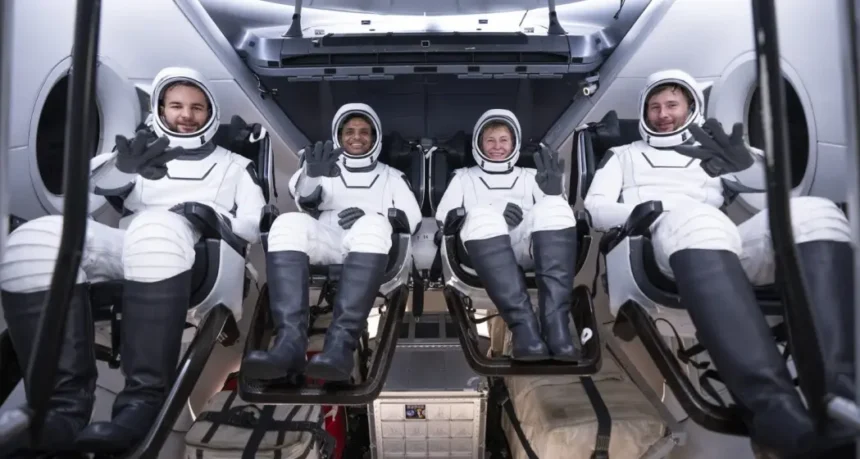Shubhanshu Shukla made history as India’s first astronaut to visit the International Space Station (ISS). His journey is a proud moment for India and marks a new chapter in its space exploration story. This achievement shows that India is closing the gap with other space powers. It’s inspiring many young Indians to dream bigger in science and technology. His story is not just about a trip to space; it’s about courage, hard work, and endless possibilities. Let’s explore how this mission unfolded, the challenges faced, and what it means for India’s future in space.
The Journey Begins: India’s Space Exploration Milestones
Overview of India’s space program
India’s space journey started with ISRO’s first satellite launch in 1980. Since then, India has built a strong reputation with missions like Chandrayaan-1 and Mangalyaan. These missions put India on the map for space research and exploration.
India has grown from launching satellites to aiming higher. The goal now is to send humans into space and develop advanced space tech. India’s space program keeps pushing forward, fueled by innovation and national pride.
Development of astronaut training in India
In recent years, ISRO began training Indian astronauts locally. Programs are designed to prepare astronauts for microgravity and long space trips. They focused on physical fitness, technical skills, and space safety.
India also partnered with NASA and other agencies for help. This collaboration gave Indian astronauts access to world-class training, which helped Shubhanshu prepare for his space journey.
Significance of sending an Indian astronaut to the ISS
Sending an Indian astronaut to the ISS is a huge milestone. It puts India among nations like the US, Russia, and China. This mission boosts India’s reputation as a space leader.
It also encourages more students and scientists to join space programs. This step opens new doors for India to explore space, develop new tech, and strengthen international ties.

Shubhanshu Shukla: Background and Training
Early life and education
Shubhanshu Shukla grew up in India with a strong interest in space. He studied aerospace engineering at a top Indian university. His fascination with space developed early, inspired by stories of astronauts and space missions.
He always dreamed of reaching beyond Earth’s limits. That drive pushed him to work hard and join the astronaut program.
Selection process and training regimen
Shubhanshu was chosen through a tough selection process. Only a few among thousands made it. His training included simulations, physical fitness, and technical drills.
He practiced operating spacecraft systems, conducting experiments, and handling emergencies. The process was grueling but necessary to prepare him for space missions.
Preparation for the ISS mission
Leading up to his trip, Shubhanshu learned about microgravity research and life in space. He trained on how to work with international teams, especially NASA and Roscosmos.
This preparation helped him adapt to zero gravity, conduct experiments, and handle long stays on the ISS. His training was thorough, making him ready for every challenge he might face.
“Splashdown of Dragon confirmed – welcome back to Earth, AstroPeggy, Shux, astro_slawosz, and Tibi!”…SpaceX said in a post on social media platform X….
Group Captain Shukla, a 39-year-old Indian Air Force officer and test pilot, completed his maiden sp…
The Space Mission to the International Space Station
Objectives of the mission
The main goal was conducting scientific research and testing new technologies. Shubhanshu and his team performed experiments to understand space better. They also worked on international projects, strengthening global ties.
Some experiments focused on medicine, plant growth, and new materials. These can benefit life back on Earth too.
Journey to the ISS
The launch used a modern spacecraft built for crew safety. It took only a few hours to reach the ISS. During the transit, Shubhanshu monitored the spacecraft and prepared for docking.
The journey was smooth, and he arrived at the station in record time. Once aboard, he began work on his scientific tasks.
Life on the ISS: Challenges and accomplishments
Life in space is tough. Shubhanshu faced microgravity daily, which made simple tasks like eating or moving tricky. Still, he kept focused and accomplished what he set out to do.
He recorded milestones like completing complex experiments and participating in international collaborations. His efforts will add valuable data to space science.
Challenges like space fatigue or equipment issues tested his patience. But his training helped him stay calm and tackle problems head-on.
Reflection on the Mission’s Impact and Future Prospects
Significance for India
This mission is a big boost for India’s space goals. It inspires countless young people to pursue careers in science and tech. It proves India can operate on a global stage in space exploration.
It also earns India respect among space superpowers, opening doors to more collaborations and missions.
Technical and scientific contributions
The experiments conducted will lead to new discoveries in medicine, materials, and space tech. Data collected will inform future missions and innovations.
The mission also tested new Indian-made equipment, boosting local tech and manufacturing.
Future of India’s human spaceflight program
India plans to send more astronauts to space and aim for lunar and Mars missions. Efforts are underway to develop indigenous spacecraft and training facilities.
Indian scientists and engineers will get more opportunities as space programs grow. The goal is to build a strong space industry with homegrown tech and expertise.
Expert Opinions and Industry Insights
Space experts praise India’s progress. Dr. Anjali Rao, a leading scientist, said the mission “marks a new era for India’s space ambitions.” Industry leaders see it as a sign of India’s rising role in global space efforts.
Global space agencies are interested in joint projects, sharing knowledge and resources. This mission shows India’s potential to influence space policies worldwide.
Key Takeaways and Actionable Insights
- Space exploration can accelerate a nation’s progress.
- Inspiring stories like Shubhanshu’s motivate youth to learn STEM.
- Aspiring astronauts should focus on education and stay dedicated.
- India’s achievement can boost investments in science and tech.
- Encouraging innovation and research helps build India’s space future.
Conclusion
Shubhanshu Shukla’s journey to the ISS is a historic milestone for India. It symbolizes hope, ambition, and progress. His successful mission sets the stage for even bigger space endeavors ahead. By reaching for the stars, India is proving its strength and potential. This achievement will inspire generations and push national space programs to new heights. The future of Indian space exploration looks brighter than ever, driven by talent, determination, and a shared dream among millions.
Grow your interest in space. Support India’s space efforts and look forward to a future where more Indian astronauts reach new horizons. The sky is no longer the limit — it’s only the beginning.

